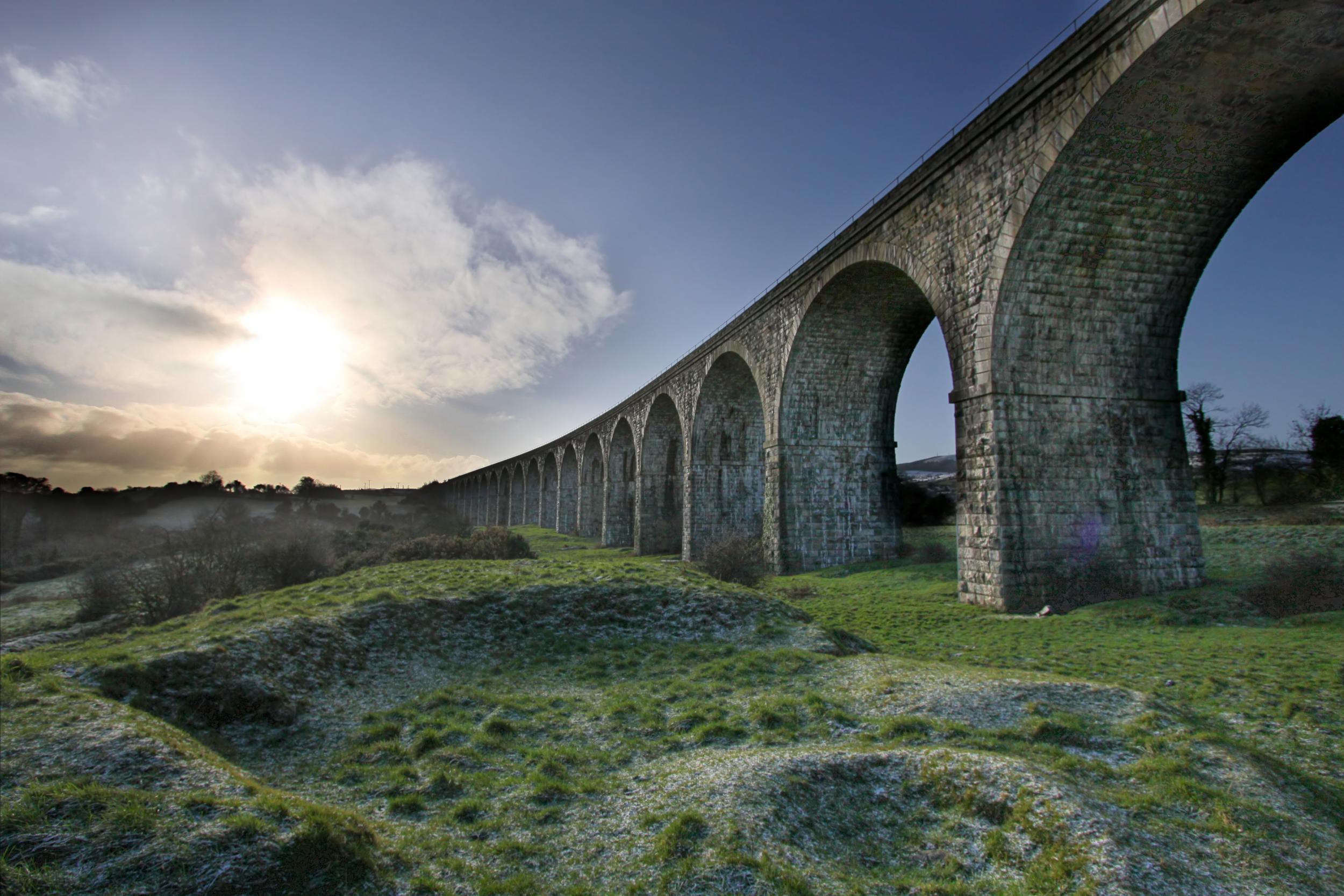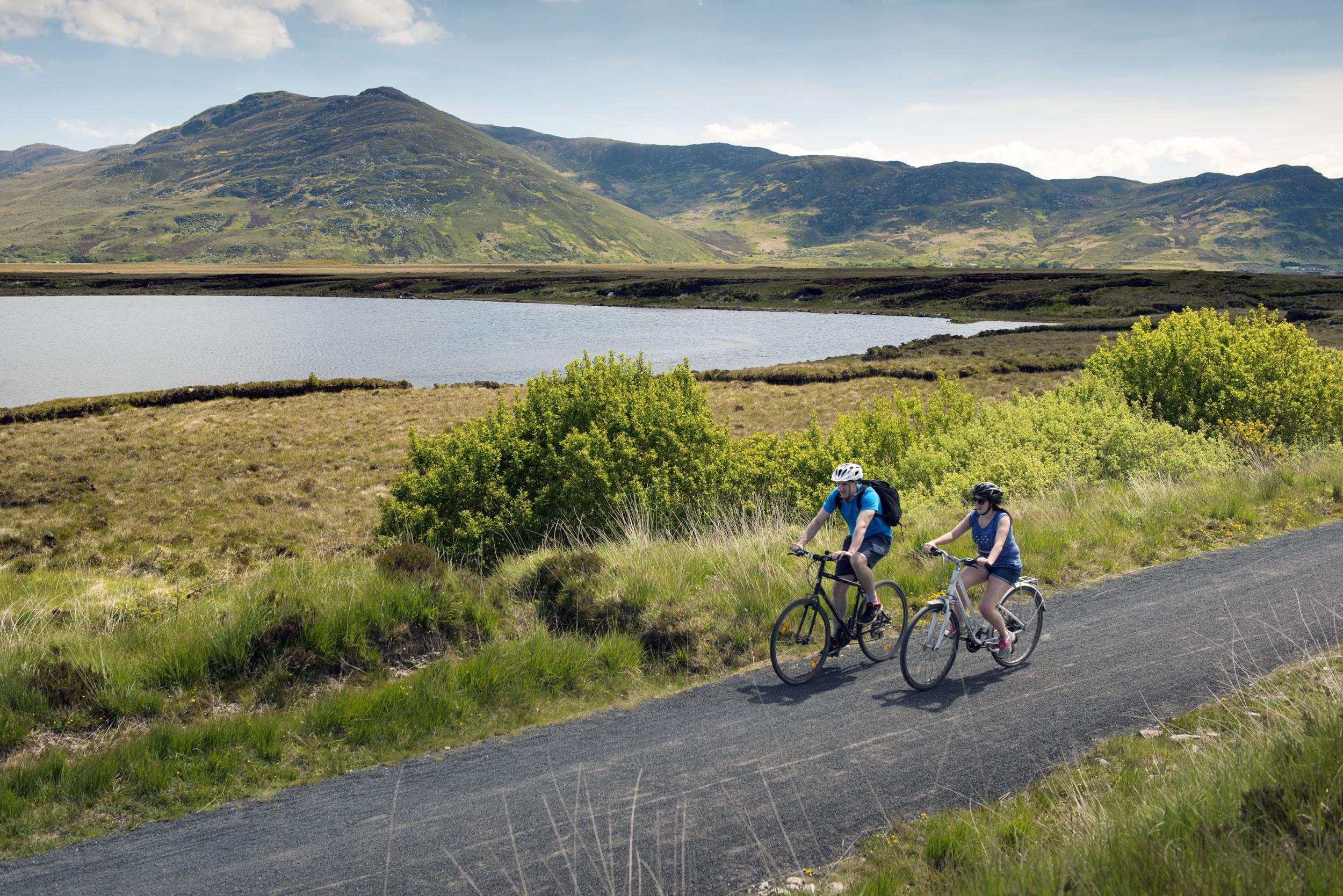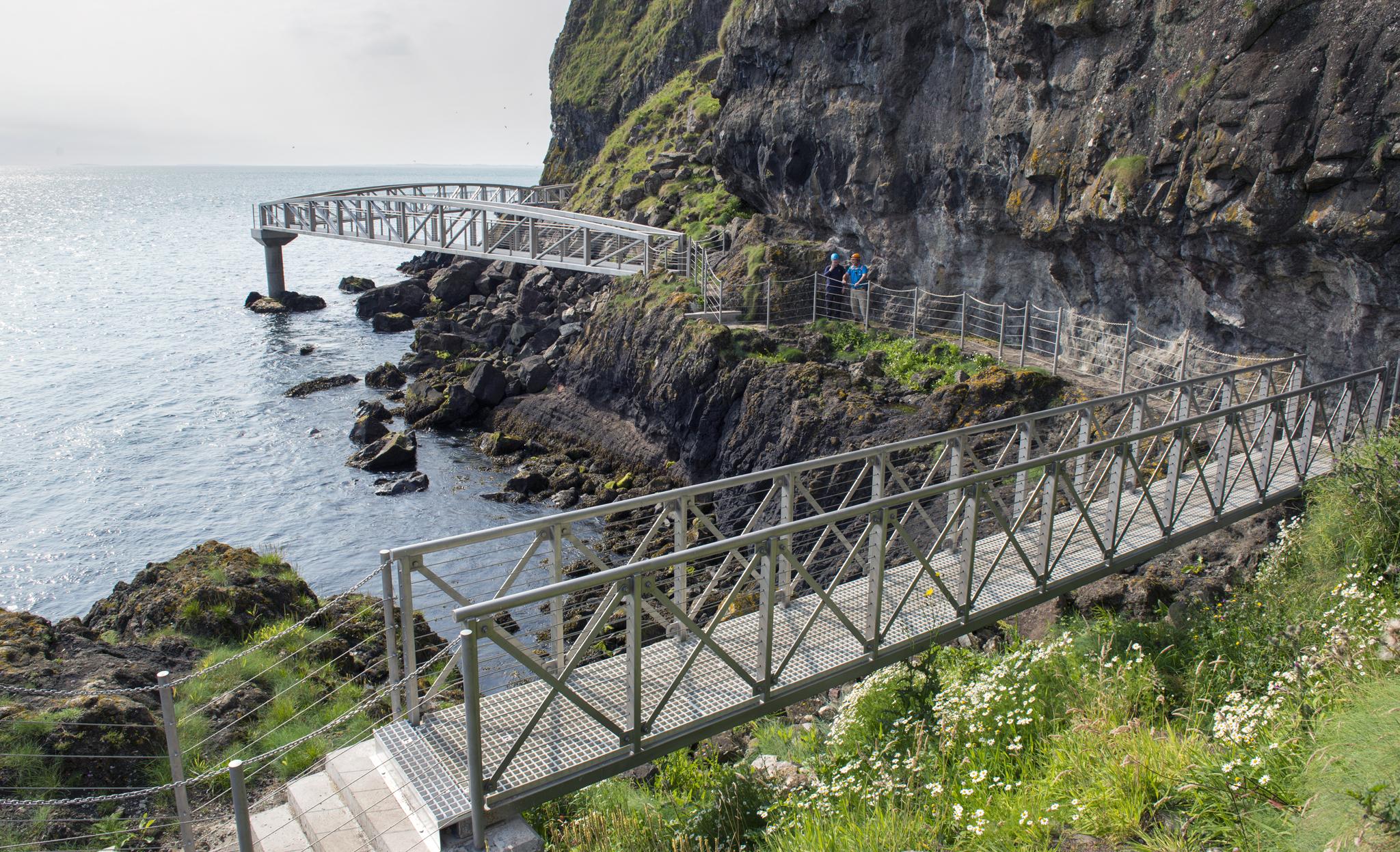Ireland by rail: luxury trains, historic routes and railway hotels
An opulent new train is about to come into service, but that's not the only way to ride the rails across the Emerald Isle

Your support helps us to tell the story
From reproductive rights to climate change to Big Tech, The Independent is on the ground when the story is developing. Whether it's investigating the financials of Elon Musk's pro-Trump PAC or producing our latest documentary, 'The A Word', which shines a light on the American women fighting for reproductive rights, we know how important it is to parse out the facts from the messaging.
At such a critical moment in US history, we need reporters on the ground. Your donation allows us to keep sending journalists to speak to both sides of the story.
The Independent is trusted by Americans across the entire political spectrum. And unlike many other quality news outlets, we choose not to lock Americans out of our reporting and analysis with paywalls. We believe quality journalism should be available to everyone, paid for by those who can afford it.
Your support makes all the difference.This month heralds an opulent new era of rail travel in Ireland with the inaugural journey of the Belmond Grand Hibernian on 30 August.
With 20 cabins accommodating up to 40 passengers, this luxury touring train will hit the tracks of the Emerald Isle from April to October each year, whisking passengers north and south of the border with a trio of two-, four- and six-night itineraries. The two-night Realm of Giants travels from Dublin to Belfast and on to Portrush, visiting sights like the Giant’s Causeway and the Old Bushmills Distillery, while the six-night Grand Tour of Ireland also visits Cork, the Lakes of Killarney, Galway, Connemara and Westport. Two-night journeys start from €3,160 (£2,729) per person, based on two sharing with full-board accommodation on the train and all excursions (belmond.com).

With around 2,300km of track, Ireland’s rail network connects Dublin with most of the major cities and towns of the Irish countryside, with the notable exception of the north west of the country. In the Republic of Ireland trains fan out from Dublin’s Heuston and Connolly stations and are operated by Iarnród Éireann (irishrail.ie) also called Irish Rail – the route between Dublin and Belfast is run jointly with Northern Ireland’s Translink NI Railways (translink.co.uk). As an example, a return fare between Dublin and Cork costs around €85.
Trains for Belfast, Sligo and Rosslare depart from Dublin’s Connolly Station north of the River Liffey, while all other trains leave from Heuston Station on its south bank. The scenic Dublin Area Rapid Transit (Dart) commuter train skirts the edge of Dublin Bay from Howth to Greystones in County Wicklow and despite its prosaic connotations, treats passengers to some superlative seaside vistas.
Part of the Dart’s path was the first rail line in Ireland, built in 1834 from Dublin’s Pearse Street station to Kingstown, as the seaside suburb of Dun Laoghaire used to be called. The world’s first commuter line, it was masterminded by the exceptionally talented and largely self-taught engineer, William Dargan, who is often referred to as the “Father of Irish Railways”. Over the next 30 years, Dargan went on to build over 1,200km of railway line – two spectacular examples of his expertise are the Dublin-to-Wexford line that skirts its way along the coast, and the 18-arch Craigmore Viaduct, just north of Newry between Dublin and Belfast. You can also see a statue of him in the grounds of Dublin’s National Gallery of Ireland (nationalgallery.ie).
This year marked 100 years since Ireland’s tumultuous Easter Rising of 1916. If you are setting off from Heuston station, spare some time to see the exhibition “1916 & The Railways” on Platform 1, which is dedicated to the role the railways played in these historic events. It continues until the end of the year (irishrail.ie).

The railway boom continued into the 20th century and at one point there was more than 5,500km of track all over the country. The breakup of the railways following Irish Independence, the rise of the car and the Second World War brought a gradual and much lamented decline of some of the smaller lines. A few of these have been sensitively repurposed as recreational amenities like the former Westport to Achill line, which was only open for 42 years before it closed in 1937. Its route is now the Great Western Greenway (greenway.ie), which has become a hugely popular, car-free hiking and biking trail. Hoping to emulate its success is the soon-to-open Deise Greenway (visitwaterfordgreenway.com) a 45km stretch of scenic, disused railway line between Dungarvan and Waterford in the South East.
Earlier this year, Tourism Ireland launched a major campaign called “Ireland’s Ancient East”, to do what the Wild Atlantic Way did for the west, shining a light on this part of the country’s fascinating heritage, spanning over 5,000 years.
Just over two hours from Dublin and founded by the Vikings in the 9th century, Waterford is the oldest centre of continuous settlement in Ireland. A celebration of all things gourmet, The Waterford Harvest Festival (waterfordharvestfestival.ie) takes place from 9-11 September.

You could also sign up for a Hook Island Safari (hookheadsafaris.com) to see the 800-year old, Hook Lighthouse on the stunning Hook Head Peninsula. This is the oldest operational lighthouse in the world that was originally maintained by an order of monks. Trips depart from Waterford at 9am and 2pm and cost €30 per person.
The community heritage project, the Waterford and Suir Valley Railway (wsvrailway.ie) also takes visitors on a short but scenic jaunt along 17km of the former Waterford Dungarven line. Fares cost €8.50.

Recently nominated as a European Capital of Culture for 2020, Galway is one of Ireland’s largest cities but it really feels more like a village. Where the Corrib River meets Galway Bay, at the city’s heart is a captivating jumble of medieval streets.
Although its cultural credentials are well known, the city has also been garnering a serious international reputation as one of Ireland’s newest gourmet hotspots with a burgeoning abundance of standout places to eat. There’s everything the Michelin-starred Aniar (aniarrestaurant.com) and Loam (loamgalway.com) to Ard Bia (ardbia.com) and Kai Café and Restaurant (kaicaferestaurant.com).

Rub shoulders with some of the world’s most exciting culinary wizards and thinkers like Massimo Bottura and Virgilio Martinez at the second annual Food on the Edge (foodontheedge.ie), a two-day symposium of discussions, held in the Town Hall Theatre on 24 and 25 October. One-day tickets cost €200.
It doesn’t go anywhere, but the Pullman Restaurant at Glenlo Abbey Hotel (glenloabbeyhotel.ie) on the edge of the city is a novel dinner location – vintage carriages from the 1920s that featured in the 1974 film Murder on the Orient Express. Two courses cost €56 per person.
In its Edwardian heyday The Gobbins in County Antrim attracted more visitors than the Giant’s Causeway nearby. Catch the train from Belfast or Larne to Ballycarry, just one mile from The Gobbins (thegobbinscliffpath.com) in Islandmagee. Reopened last year having been closed for 60 years, this exceptionally dramatic, two-mile coastal path of walkways, stairs and gantries is edged by towering, black basalt cliffs on one side and the swirling sea on other.

It was originally opened in 1902, masterminded by Berkeley Deane Wise, chief engineer of the Belfast and Northern Counties Railway Company to lure more visitors to the region. Accessible only by guided tour, it costs £8.50 per adult. It's temporarily closed for maintenance but is due to reopen imminently.
Where to stay
The building boom of the 19th century also extended to a number of railway hotels purpose-built by the Great Southern & Western Railway. Despite subsequent sell-offs, several have flourished.
Kerry’s Park Hotel Kenmare (parkkenmare.com) is one of the most luxurious with a state-of-the-art spa and views out over tranquil Kenmare Bay. Doubles start at €190 per room, B&B.

With an enchanting setting outside the tiny village of Sneem, the nearby Parknasilla Resort & Spa (parknasillaresort.com) was designed in 1894 for the railway company and is a classic Irish seaside retreat. Doubles from €105 per night B&B.
Right on the Wild Atlantic Way, steps from the beach and beautiful Clew Bay, The Mulranny Park Hotel (mulrannyparkhotel.ie), built in 1897, remains enduringly popular with and has the Great Western Greenway on its doorstep. Doubles start at €180 per night B&B.
More information
Join our commenting forum
Join thought-provoking conversations, follow other Independent readers and see their replies
Comments